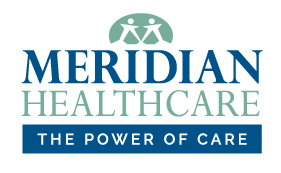Looking at the Top Reasons for Primary Care Visits
Primary care providers are the first line of defense against many health conditions. They can diagnose health problems, manage chronic diseases, and perform annual check-ups. Regular visits with your primary care doctor are preventive but may result in referrals to specialists for medical care. The following are some of the top reasons for primary care visits.
The First Line of Defense
Primary care physicians (PCP) can help you manage your overall health with preventive care. That includes screening tests for health issues and counseling on healthy lifestyle behaviors (eating a balanced diet and regular exercise), among other benefits.
Primary care providers have a broad range of medical knowledge. They’re generalists who can treat an array of medical conditions and address a host of health concerns.
There’s an established long-term relationship between primary care physicians and patients, allowing PCPs to better understand their patients’ medical histories and individual needs. PCPs can coordinate care among different specialists and healthcare providers, ensuring patients receive the right care.
Back Pain
Most often caused by muscle strain, back pain is one of the most common reasons for primary care visits. If you have back pain that lasts more than a few days, see your doctor to rule out more serious problems like herniated discs or stenosis.
Primary care physicians often make referrals for patients to address their chronic pain. This may include seeing specialists with physical therapy, chiropractic, or acupuncture.
Cholesterol
Cholesterol is a waxy substance that circulates in the bloodstream. It can be found in your liver and other organs, as well as in foods like eggs, meat, and cheese. High levels of cholesterol in the blood can cause atherosclerosis (build-up of plaque on artery walls), which leads to coronary heart disease and strokes.
High Blood Pressure
Also known as hypertension, high blood pressure is one of the most common reasons for primary care visits. About 1 in 4 adults between the ages of 20 and 44 has high blood pressure, which occurs when the force of your heart’s pumping action against your arteries exceeds what they can withstand.
High blood pressure can lead to heart disease and stroke. It also increases the risk of kidney disease, blindness, dementia, and other health problems. Blood pressure readings are taken by measuring systolic (top number) and diastolic (bottom number) pressures at each visit with a sphygmomanometer (blood pressure cuff).
Chronic Conditions
Chronic conditions are long-lasting and can be serious. They can include high blood pressure, heart disease, diabetes, arthritis, and asthma.
Primary care providers can help patients manage their chronic conditions. Treatment may include medication or lifestyle changes such as diet and exercise. Some chronic conditions may require more frequent visits to your doctor’s office than others, depending on how they’re treated or managed.
Heart Disease
Heart disease is the leading cause of death in the United States. While often hereditary, it can be prevented by eating a healthy diet and exercising regularly. Heart disease can be diagnosed early with tests and screenings, so it’s important to know your risk factors.
Mental Health
Everyone struggles with their mental health from time to time, and it’s a great thing to bring up with your primary care physician. They can conduct screenings, make referrals for counseling, and send in prescriptions when necessary. Being honest with your PCP about your mental health problems helps them provide better care, as they can understand you and your life beyond just your medical records.
How Health Insurance Works
Visits to your PCP usually cost money, with or without insurance. You’re probably familiar with the basics of health insurance. You pay a monthly or yearly premium, and in exchange, the insurance company agrees to pay for the healthcare services you need.
The health insurance company negotiates on your behalf with the doctor’s office so that they can agree on a price for treatment. The amount they agree upon is called “allowed charges.” These allowed charges vary depending on where you live and which type of provider is treating you (such as an optometrist vs. a dentist).
If you have questions about billing, don’t hesitate to ask your PCP’s office about billing protocol, as well as call your insurance company to make sure you understand what care services are covered.
Before Your Primary Care Visit
Before you see your primary care physician, make a list of all your current medications, including any over-the-counter medicines, vitamins, and supplements. At your appointment, they need to know this list as well as your allergies and medical history in order to provide the best care possible.
Make sure to stick with any follow-ups recommended by your PCP, especially when managing a chronic condition. Follow-up appointments are also made following new treatment initiatives.
Telehealth
The COVID-19 pandemic caused a rise in the number of people utilizing telehealth. While there has been a decrease since this spike in the last couple of years, many healthcare providers are still offering this service.
Primary Visits With Meridian HealthCare
While there are a few top reasons for primary care visits, there is no limit to what you can discuss with your primary care provider. Seeing your PCP regularly can help catch health issues early (potentially avoiding visits to the emergency room). Contact Meridian HealthCare today to make an appointment.






